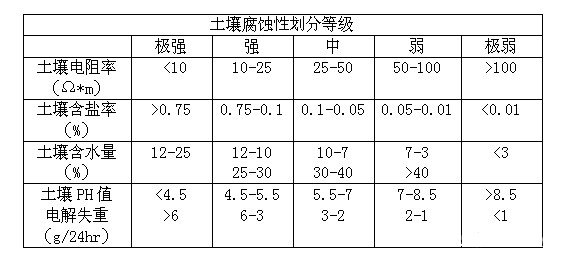Large-scale ground-mounted photovoltaic power plant projects typically require a thorough geological survey of the site to assess the soil conditions. This is especially important when using spiral piles, which are currently one of the most convenient and widely used foundation solutions for such projects. During the geological survey, it's essential to evaluate the soil's erosion potential. According to national standards, soil corrosivity is categorized based on several factors, with soil resistivity being the most significant determinant of corrosion risk.
The table below outlines the classification of soil corrosivity:

Based on years of experience in PV power plant design and testing, Baowei’s 80μm hot-dip galvanized coating has proven effective in soils with weak or slightly corrosive conditions, offering a service life of up to 25 years. This makes it a reliable choice for many solar farm installations.
Another useful reference is the corrosion rate of zinc coatings in different regions of the United States. The data shows that the average corrosion rate of zinc in soil ranges from 2 to 8 μm per year. Therefore, with an 80μm galvanized layer, the expected protection period can vary between 10 to 40 years depending on local soil conditions.
These findings highlight the importance of selecting the right coating thickness based on site-specific soil analysis. Proper corrosion protection not only ensures the structural integrity of the foundation but also contributes to the long-term performance and cost-effectiveness of the entire photovoltaic system.
Guangdong Kinen Sanitary Ware Industrial Co.,Ltd. , https://www.kinengroup.com